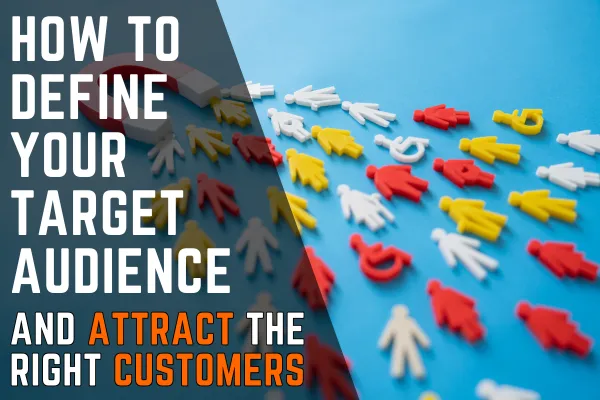
How to Define Your Target Audience and Attract the Right Customers
Defining Your Target Audience
Do You Know Who You’re Really Speaking To?
One of the biggest mistakes small business owners make in their marketing is trying to appeal to everyone. When you cast too wide a net, your message gets lost. You end up with vague content, irrelevant leads, and campaigns that fall flat.
Imagine you’re a baker trying to sell cupcakes. Are you targeting busy parents who need party treats, or couples looking for elegant wedding desserts? The tone, style, and even the platform you use will be completely different depending on who you want to reach.
This is why defining your target audience is the cornerstone of effective marketing. When you truly understand your ideal customer, your marketing becomes clear, focused, and impactful.
What Happens When You Don’t Define Your Audience?
Without a clear audience, marketing feels like a guessing game. You might:
Waste money on ads that don’t convert.
Create content that doesn’t resonate.
Feel like you’re spinning your wheels without making progress.
This lack of clarity doesn’t just hurt your marketing—it creates frustration, doubt, and wasted time.
1. Start with the Basics: Demographics and Needs
Identify the fundamental traits of your ideal customers, such as age, gender, location, and income. Ask yourself:
Who is most likely to benefit from your product or service?
What problem does your business solve for them?
Example: A yoga studio might target women aged 25–45 who are health-conscious and live within 10 miles. Their need? Stress relief and convenient class options.
How-To: Write down the specific demographic traits that describe your ideal customer and match them to the problem you solve. Use tools like customer surveys or existing sales data to validate these traits.
2. Dive Into Psychographics: Understand Their “Why”
Go beyond surface-level details and dig into your audience’s motivations, values, and pain points. Psychographics reveal the emotional drivers behind their purchasing decisions.
What motivates them to take action?
What values influence their decisions?
Example: The yoga studio could focus on busy moms who value mindfulness and community but feel overwhelmed by their schedules.
How-To: Use social media polls, client conversations, or tools like Google Analytics to uncover behavioral patterns and preferences.
3. Build Customer Personas
Create detailed profiles of your ideal customers to bring them to life. Include:
A name, age, and profession.
Their challenges and goals.
How your product or service fits into their life.
Example: “Megan, 35, is a working mom who feels overwhelmed and wants to make time for self-care. She needs a yoga studio with flexible class times and an inviting atmosphere.”
How-To: Develop 2–3 personas that represent your key customer types. Base these on real insights, not assumptions.
4. Validate Your Assumptions: Talk to Real Customers
Don’t guess—ask. Speak directly to your customers through surveys, interviews, or casual conversations. Learn:
What they value most about your product or service.
What challenges they face in their lives or businesses.
Example: A yoga studio owner might ask, “What’s the biggest barrier keeping you from attending yoga classes?” Answers like “lack of time” could guide their marketing to emphasize quick, convenient classes.
How-To: Use tools like Google Forms for surveys, or set up quick polls on social media to gather input.
5. Analyze the Data
Use analytics tools to identify patterns and refine your audience further. Look at:
Who’s engaging with your website and social media.
What products or services are selling best.
How customers are finding your business.
Example: A yoga studio might find that their website attracts younger audiences from social media, while their email list skews slightly older.
How-To: Dive into Google Analytics, Facebook Insights, or your CRM software to uncover trends and make data-backed decisions.
Example of a Target Audience Transformation
One client I worked with, a landscaping company, struggled to attract high-paying clients. After defining their audience—homeowners with properties over an acre who wanted low-maintenance landscaping—we shifted their messaging. They started emphasizing premium services like irrigation systems and custom garden designs. Within six months, they increased revenue by 30% while reducing wasted time on small, low-budget projects.
Why Defining Your Audience Matters
When you know who you’re talking to, you can:
Craft marketing messages that feel personal and relevant.
Choose the right platforms to reach your audience.
Spend your marketing budget more efficiently.
Action Step: Define Your Target Audience Today
Grab a notebook and answer these questions:
Who is most likely to buy from me?
What problem does my business solve for them?
Where do they spend time online or in-person?
Once you’ve outlined your audience, start tailoring your marketing efforts to meet their specific needs and desires.
Ready to Take It Further?
Once you determine who you are targeting, the next step is choosing the right marketing channels to place your message in front of that audience. Learn the next steps here.